![The Mohican Board! [Bumppo's Redux!] The Mohican Board! [Bumppo's Redux!]](images/wwwboard.gif) |
|
| Author |
 Topic Topic  |
|
|
James N.
Colonial Militia
   

USA

Bumppo's Patron since [at least]:
October 24 2007
Status: offline
|
 Posted - October 16 2011 : 1:15:42 PM Posted - October 16 2011 : 1:15:42 PM



|
In line with the views expressed in the Thanksgiving pinned thread by lonewolf, when I've toured New England I've actively sought out those places that contradict our "touchy-feely" sanitized version of Pilgrims, Indians, and Thanksgiving. I went pretty far afield searching, so the places seen here are scattered widely across southern New England in all three states.
Some of the truly Tragic figures in our history are the Wampanoag sachems Massasoit and his sons Wamsutta and Metacomet. After famously helping the Pilgrims survive, Massasoit ( also called Osamequin ) grew old and saw his empire steadily erode with continued English immigration. Forty years following the arrival of the Pilgrims Massasoit died, succeeded by his eldest son, Wamsutta, called by the English "King Alexander" after Alexander the Great of antiquity. I looked vainly in Masasoit State Park for some trace of them, but found it to be only a modern campground. Though its location seems to have NO historical significance, it's in the midst of what once were Wampanoag lands and serves as a reminder of the beauty of their surroundings.
Image Insert:
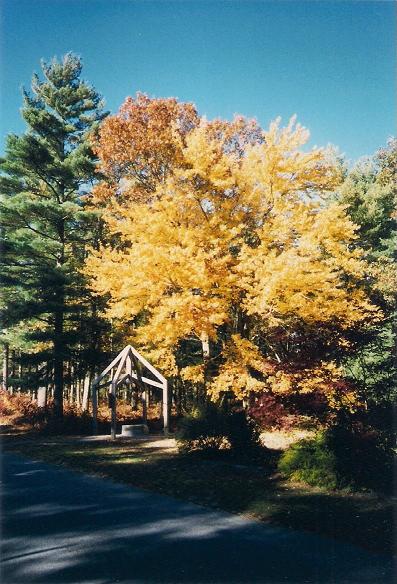
64.05 KB
Image Insert:
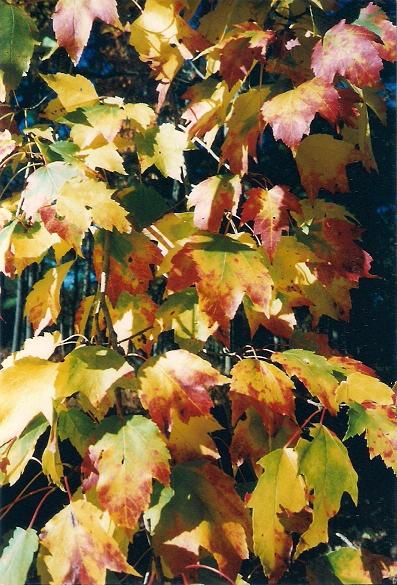
66.08 KB
The Pilgrims, under the leadership of William Brewster, seemed to get along fairly well with Massasoit and the Wampanoags, building a trading post in 1627 on Buzzard's Bay at Aptucxet ( modern-day Bourne, Mass. ), seen here in a reconstruction:
Image Insert:
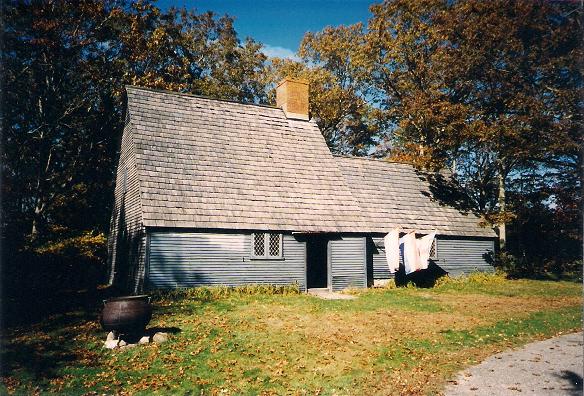
78.88 KB
Unfortunately, that was not the case with the Puritans who settled the Massachusetts Bay Colony around Boston. They quickly began to spread out into the countryside, even going so far as creating satellite colonies at the mouth of the Connecticut River and at New Haven. The "splinter" group of Dissidents led by Roger Williams removed from them also, settling around Narragansett Bay at Providence and Newport. Puritan Congregationalists moved steadily up the Connecticut River going as far north as Deerfield in what is now western Mass., leaving the Wampanoags surrounded and steadily isolated, outnumbered, and squeezed in by their new neighbors.
Image Insert:
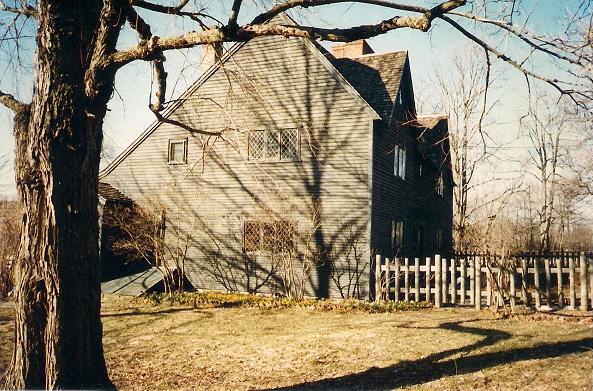
83.74 KB
The ca. 1655 John Whipple House in Ipswitch, Mass., founded in 1634. It is a "typical" English-style cottage or "half house", enlarged by his son and grandson, both also named John Whipple!
|
|
report to moderator
|
|
|
James N.
Colonial Militia
   

USA

Bumppo's Patron since [at least]:
October 24 2007
Status: offline
|
 Posted - October 16 2011 : 1:54:58 PM Posted - October 16 2011 : 1:54:58 PM




|
The situation deteriorated with the death of Massasoit, especially when in 1662 his successor Wamsutta ( "Alexander" ) was summoned before a Pilgrim court in Duxbury to be questioned about a suspected plot against the colony. On his return, he was taken ill with a fever and died at his home at Mount Hope in what is now the state of Rhode Island. At the time his death was considered suspicious by his people who said he'd been poisioned. He was in turn succeded by his younger brother Metacom or Metacomet, but known to the English as "King Philip" after Phillip of Macedon, father of Alexander the Great.
Image Insert:
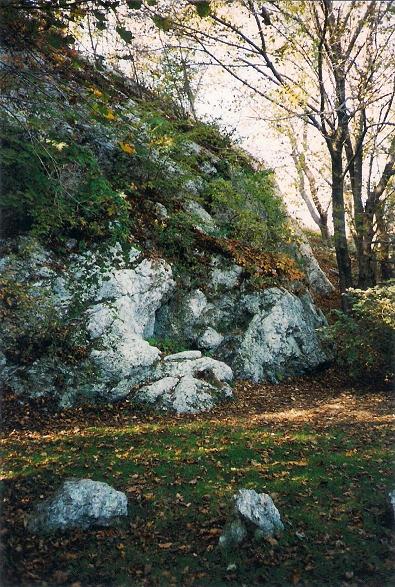
87.43 KB
This stone outcropping in the woods at Haffenreefer Indian Museum at Mount Hope ( modern-day Bristol, R.I. ) is identified as "King Phillip's Throne" and is thought to be a traditional Wampanoag council site.
Image Insert:
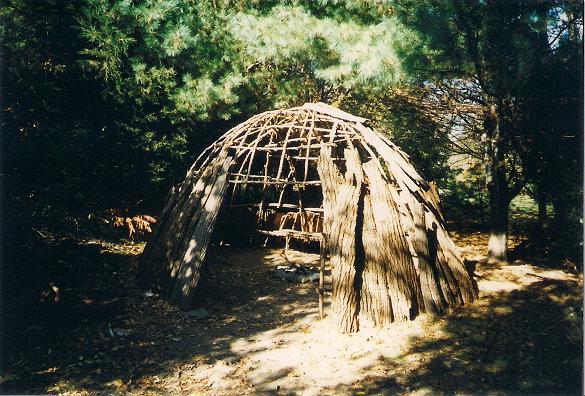
72.21 KB
Also on the museum grounds is this reconstruction of a typical wigwam.
At first it seemed "Phillip" was getting along with his English neighbors, but after several years of alternating peace and recriminations from both sides, strains began to be more and more obvious. Matters weren't helped by the continuing wars and conflicting claims between the various Indian tribes and nations in the area: Pequots, Narragansetts, Niantics, Nipmucks, Pocassets, and Mohegans ( NOT related to Mohicans! ) among others. Tragically for them, wars continued among these tribes, often involving the Pilgrims and Puritans as willing allies of one faction or another until the English established themselves as arbitrators in Indian feuds. |
report to moderator  |
|
|
James N.
Colonial Militia
   

USA

Bumppo's Patron since [at least]:
October 24 2007
Status: offline
|
 Posted - October 16 2011 : 2:31:35 PM Posted - October 16 2011 : 2:31:35 PM




|
After rallying as many allies as possible to his cause, Phillip's warriors struck several locations almost simultaneously in June, 1675. It is unclear if Phillip truly led the attack or just allowed himself to be swept along by the tide of his increasingly enraged people, angered over the execution of three Wampanoags by the English for the murder of another Indian friendly to them. "King Phillip's War", as it became known, was the most severe in the history of America, in terms of the ratio of casualties to population size, though it is virtually unknown outside New England today. Towns and villiages across Massachutsetts, Connecticut, and Rhode Island were attacked and many of them obliterated during the especially harsh summer of 1675, though fighting continued on into the next year as well.
Image Insert:
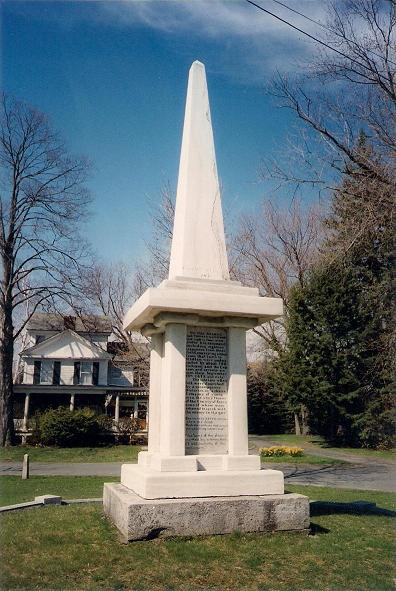
57.89 KB
Monument over the mass grave of 64 men of Capt. Thomas Lathrop's company, killed in an ambush at what came to be known as Bloody Brook near Deerfield, Mass., Sept. 18, 1675. At the time this incident was called, "the Saddest that ever befel New-England".
Image Insert:
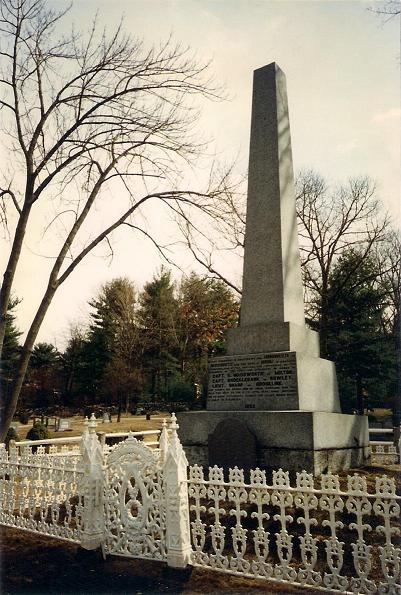
67.54 KB
Monument marking the grave of those killed in the so-called Sudbury Fight in April, 1676, only some twenty miles outside Boston at Sudbury, Mass. As many as five hundred warriors of various tribes may have been involved in this assault, ambushing several small parties of militiamen in and arround the small community.
|
report to moderator  |
|
|
James N.
Colonial Militia
   

USA

Bumppo's Patron since [at least]:
October 24 2007
Status: offline
|
 Posted - October 16 2011 : 3:42:35 PM Posted - October 16 2011 : 3:42:35 PM




|
Retribution, though scarcely swift, eventually was devastating to the combined tribes. Their main problem, as always, was sustenance over the long haul. They had inflicted hundreds of casualties ( while also suffering themselves, it must be admitted ), but while "on the warpath" were unable to perform the day-to-day routines of fishing, hunting, and farming necessary for their survival as a people. Also, they had inhabited villiages, farms, and other locations well-known to their enemies. The winter of 1675 - 76 they began to suffer privations that began to erode the alliance that Phillip had carefully assembled over the previous years, and his allies began to fall away one by one.
No place suffered the wrath of the assembled colonies like the one that became the scene of what is called "The Great Swamp Fight". I found this site buried deep in the woods near modern Kingston, R.I., at the end of a LONG trail; since it was in fall, there were gunshots in the distance all around me, increasing my anxiety and spurring me to hurry lest I be mistaken for whatever "hunting season" it was! Here Phillip's allies the Narragansetts had built "a great secret fortified villiage on a small island in the midst of the Great Swamp." The Great Swamp has disappeared, replaced by a dense wood, but the remote and lonely location bears witness to the tragedy that overtook the Narragansetts.
Image Insert:
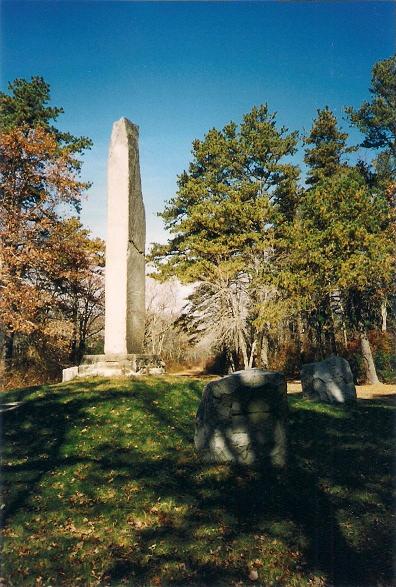
66.38 KB
Image Insert:
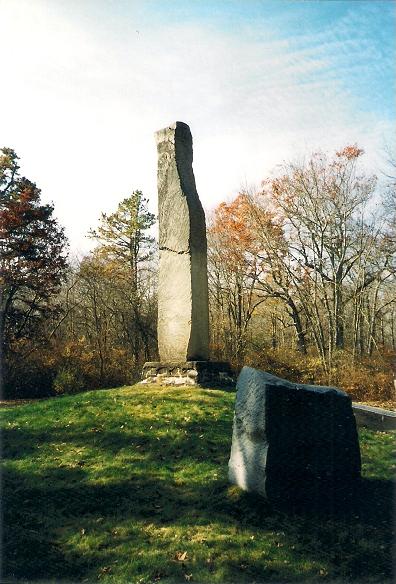
57.3 KB
This rough-hewn granite obelisk supposedly marks the center of the Narragansett villiage; surrounding its base are four smaller boulders, each bearing the name of one of the four colonies who came together to crush the uprising: Massachusets Bay, Connecticut, Rhode Island, and Plymouth.
Led to the village by a traitorous Indian called Peter, the combined New England force, including about 150 Mohegans and Pequots, all led by Gen. Josiah Winslow of Plymouth moved through the supposedly impenatrable swamp on Dec. 16, 1675. It contained possibly as many as a thousand Narragansett men, women, and children, unaware of the approach of the troops who quickly surrounded it. Captain Benjamin Church led repeated assaults which eventually breached the stockade; the wigwams inside were then set on fire by the troops to drive out the Indians, who were killed as they tried to escape the flames. Between two hundred and six hundred are thought to have been killed outright, but many more perished from exposure in the winter cold or subsequent starvation. The Narragansetts were broken as a people and their resistance negated.
Image Insert:
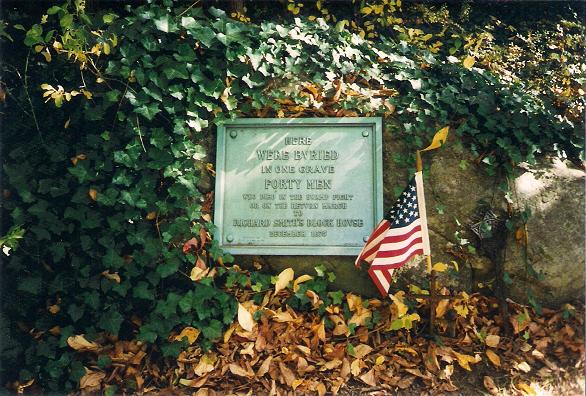
76.39 KB
Colony losses were also heavy, and having burned down their only source for shelter, they too immediately retreated the way they had come, all the way back to "Smith's Castle" at Wickford, R.I. This is the mass grave of forty of them who died subsequently from their wounds. As many as eighty eventually died and many more were wounded or suffered from the effects of the cold, enough to incapcitate the army and bring the campaign season to a close. |
report to moderator  |
|
|
James N.
Colonial Militia
   

USA

Bumppo's Patron since [at least]:
October 24 2007
Status: offline
|
 Posted - October 16 2011 : 4:32:42 PM Posted - October 16 2011 : 4:32:42 PM




|
Of course the real tragedy of this period was the virtual extermination of the New England tribes; if not killed outright, they were subjugated and reduced to poverty, living on the fringes of English society. Unfortunately, then as later, they largely were responsible for doing this to themselves, due to their continual and continued inter-tribal warfare. Some tribes came out of this better than others, mainly those who steadfastly supported English goals, serving as faithful allies, but even those were eventually much reduced in land, status, and influence. Still, some were remembered with respect, like the Mohegan sachem Uncas, buried here in the Royal Mohegan Burial Ground, in Norwich, Conn.:
Image Insert:

83.16 KB
The Historical sign beside his grave reads: "Uncas ( Circa 1606 - 1682 )...The monument was dedicated by President Andrew Jackson in 1833. The fenced area is what remains of a much larger Indian burial ground."
Uncas and his Mohegans steadfastly fought alongside their Pilgrim and Puritan allies against first the Pequots in the 1630's, and then both their longtime enemies the Narragansetts and the Wampanoag in King Phillip's War. Likely, it was the memories of THIS Uncas and the assistance of his Mohegans that served as Cooper's inspiration in the naming of his character Uncas. Though Mohegan holdings were also greatly reduced they didn't suffer as much as their opponents.
Nearby is also the site of "Fort Shantok", one of their stockaded villages that was attacked by the Narragansett:
Image Insert:

75.08 KB |
report to moderator  |
|
|
James N.
Colonial Militia
   

USA

Bumppo's Patron since [at least]:
October 24 2007
Status: offline
|
 Posted - October 16 2011 : 5:09:10 PM Posted - October 16 2011 : 5:09:10 PM




|
At last Metacom, or "King Phillip" was almost alone, abandoned by his allies, his Wampanoag killed, captured, or dispersed. ( His own wife and son were among the captives; his heir was sold into slavery in the West Indies, never to be seen again. ) He had previously "hid out" in various locales probably similar to some of the wilds that amazingly can still be found in remote parts of New England like this canyon near Norwich, Conn.:
Image Insert:
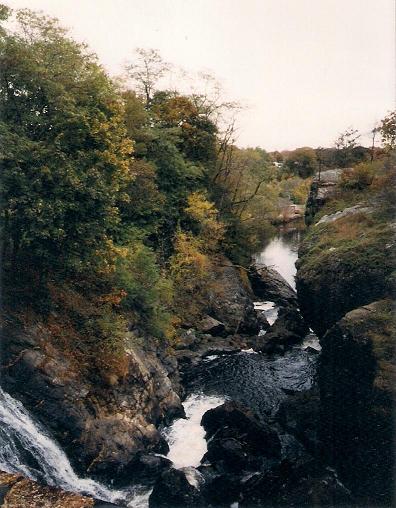
49.22 KB
In the summer of 1676, he was pursued by Captian Benjamin Church and returned with a small party to the area of the ironically named Mount Hope on the shores of Narragansett Bay, R. I., to await his fate. It came Aug. 12, 1676, when Church's party overtook and surrounded them, dividing into pairs before opening fire. The Wampanoags bolted, and one raced toward two militiamen, one white, another Indian, who both fired; the Englishman's gun missfired, but his ally brought down the target: Phillip lay dead, "sprawled in the mud". In the words of Church, he was "a doleful, great, naked, dirty beast." His body was quartered, and they bore his head back to Plymouth where for years afterward it was exhibited as both a curiosity and a warning.
Image Insert:
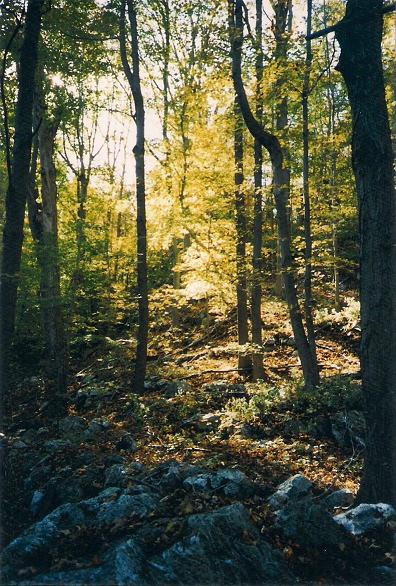
80.78 KB
On "History Walk" trail at Haffenreefer Indian Museum, Mount Hope, Bristol, R.I., near "King Phillip's Throne" and in the general area where Metacom/Phillip was killed.
For further reading, I have taken much of the above from the standard history, Flintlock and Tomahawk - New England in King Phillip's War by Douglas Edward Leach ( 1958 ); but there's a NEW study available that I haven't seen yet - sorry, I don't remember its name or author! |
report to moderator  |
|
|
Fitzhugh Williams
Mohicanland Statesman
    
  

Bumppo's Patron since [at least]:
July 17 2005
Status: offline
|
 Posted - October 16 2011 : 9:09:42 PM Posted - October 16 2011 : 9:09:42 PM



|
| Recently I have gotten involved with some 17th century reenacting in New England. This year we had an event at Pemaquid, Maine. It was for any 17th century impression. Next year they want to scale it down to one time period. The logical one is King Phillip's War, but the New Englanders seem to think that reenacting it is taboo. Being from SC, I have no particular feelings about that, anymore than I have about the Cherokee War of 1760. But those in New England will not touch it, and instead have decided upon some French/English action of 1692. Perhaps even after more than 335 years it is still a very sensitive topic? |

"Les deux pieds contre la muraille et la tete sous le robinet" |
report to moderator  |
|
|
Monadnock Guide
Council of Elders
    
   
USA

Bumppo's Patron since [at least]:
March 14 2005
Status: offline
|
 Posted - October 17 2011 : 06:27:01 AM Posted - October 17 2011 : 06:27:01 AM



|
| Well Fitz, I'm not in the re-enacting community so this is purely a guess, - but it sounds like "political correctness" again. - After all, - the Indians lost, ... we can't have that. |
you can keep "The Change" |
report to moderator  |
|
|
James N.
Colonial Militia
   

USA

Bumppo's Patron since [at least]:
October 24 2007
Status: offline
|
 Posted - October 17 2011 : 3:32:19 PM Posted - October 17 2011 : 3:32:19 PM




|
Fitz,
I'm sorry to say I'd never "visited" that part of the Forum before, so had missed your very fine photos of the event - Maine is one of the few states I've never been to, and I'd really like to make the modern drive paralleling the route of Arnold's March to Quebec in 1775. It looks like it and the location were quite interesting! When I previously told MG over on the Thanksgiving thread that I'd passed on going aboard the reproduction Mayflower II, it was less a comment about the ship than about the way I've had to see things like these sites. Though I AM ( or at least WAS ) a reenactor, it's always been firmly rooted in 19th Century impressions and locations; to visit places like these, I've had to make what I referred to as "flying vacations", meaning not only the method of arriving at my destination, but also the speed with which I've been forced to deal with them. I've also always approached "touring" with the idea that THIS may be the only time I'll ever get to visit a particular place, and that also drives me at a furious pace to see as much as possible and not linger too long in a particular spot!
My twin problems have always been TIME and MONEY; it was most practical in terms of BOTH to take off a week at a time, fly to some destination like Boston, Albany, Newark, or Hartford/Springfield ( the airport's between the two at Windsor Locks, Conn. ) depending on my chosen itenarary, then rent a car for a week. I've always "worked" much harder at my vacations than at my various jobs; trips usually consisted of a LOT of furious driving to, then walking and hiking around various historic sites. Meals were often deferred to later, depending on exactly what I was doing/seeing/visiting at the time. At night in my cheap motel rooms, I'd fall exhausted into bed, but still sit up in my "Land of Counterpane" surrounded by my maps, guidebooks, and local travel folders planning my next day's travel/travial.
I've always felt the very BEST way to study and learn history is by visiting the places where it happened, but also have always had to do it on a budget, so places like Plimouth Plantation, the Mayflower II, the reconstructed Jamestown, the so-called Yorktown Victory Center, etc., etc. have always had to take a backseat to the REAL thing whenever possible. An exception was Colonial Williamsburg, which my traveling companion insisted on and subsequently HATED, terming it "Six Flags without the rides"! I agreed, also turned off by the throngs of knobby-kneed tourists, long queues to get into any of the "attractions", and total lack of anything vaguely resembling REAL colonial LIFE or craftsmanship.
I've always prefered seeking out-of-the-way locations like these, and in "off-season" in order to at least try and imagine what once happened there and to whom, always guided by my reading. I'd LIKE to be able to see and experience everything, but always have had to choose; occasionally I've chosen wrong. I was sorry on this particular trip to have missed the then-new Pequot Museum/visitor center which I subsequently read was worthwhile, but since it was somehow connected with their CASINO I decided at the time to pass it up; as I remember, it also had an entrance fee! Now that I'm retired, the TIME factor is no longer a concern; but with our crappy economy, MONEY unfortunately still dictates the scope of my activites. |
report to moderator  |
|
| |
 Topic Topic  |
|
|
|
| The Mohican Board! [Bumppo's Redux!] |
© 1997-2025 - Mohican Press |
 |
|
| Current Mohicanland page raised in 0.24 seconds |
 |
|

![The Mohican Board! [Bumppo's Redux!] The Mohican Board! [Bumppo's Redux!]](images/wwwboard.gif)



